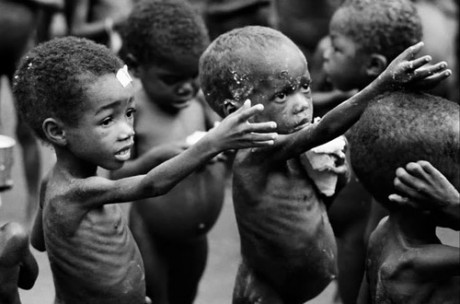The Relationship Between Social Justice and Economic Justice

There is an enduring and powerful relationship between social justice and economic justice. Social justice has many definitions. The most common definition, according to the Oxford Dictionary, is: “Justice in terms of the distribution of wealth, opportunities and privileges within a society.”
The definitions that are most applicable to alleviating poverty, however, are:
- The idea that every person should have equal rights to basic liberties and needs, and inequalities should be arranged to the greatest benefit for those considered lowest in society.
- From the Huffington Post: “…promoting a just society by challenging injustice and valuing diversity. It exists when all people share a common humanity and therefore have a right to equitable treatment, support for their human rights and a fair allocation of community resources.”
However, the current functioning of global society violates each of these definitions almost completely, and therefore expresses the lack of and need for social justice in all areas of the world, especially developing nations.
The United Nations Development Programme reports shocking statistics from poverty elimination research, detailing that as of 2000, there were 323 million people living on less than $1 a day, 185 million people who were undernourished and 273 million people without access to improved water sources in sub-Saharan Africa, the most impoverished region overall.
These harrowing numbers from sub-Saharan Africa were accompanied by information stating that 44 million primary age children were not in school, 23 million primary age girls were not in school, five million children under five years old were dying each year and 299 million people were without access to adequate sanitation. These statistics demonstrate that simple economic failure and injustice is not an isolated issue, but rather closely parallelled by social failure and injustice as well.
In contrast, the statistics from central and eastern Europe are staggeringly different. Only 21 million people were living on less than on $1 a day, only 33 million people were undernourished, only 29 million people were without access to improved water sources, only three million primary age children were not in school, only one million primary age girls were not in school, less than a million children under five years old were dying each year and an insignificant amount of people were without access to adequate sanitation as of 2000, so low that it was not even reported numerically.
As can be clearly seen, there is a direct correlation between social justice and economic justice, and a very large gap between developed nations and impoverished countries. The more economically impoverished a nation remains, the more social injustice thrives and prevails. The greater the poverty, the fewer people are given fair and equal access to basic needs and rights.
To start fighting such global, national and statistical chasms and deprivations, the United Nations’ Millennium Development Goals have started targeting social justice, specifically to help achieve the goals of:
- Eradicating extreme poverty and hunger
- Promoting gender equality and empowering women
- Ensuring environmental sustainability
The hope is that the new information and educational awareness of the relationship between social justice and economic justice will kickstart the alleviation of poverty by focusing on the social injustices in each region and developing country to foster a new approach for decreasing poverty overall.
– Lydia Lamm
Photo: Wikimedia Commons
